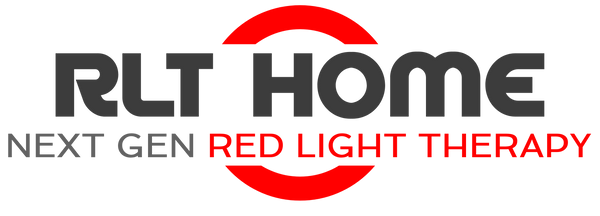The Difference Between Red Light Therapy and Ambient Red Light
Red light therapy and ambient red light have different definitions and applications.
Table of Contents
Red Light Therapy
Red light therapy is also known as photobiomodulation (PBM). Its healing properties are increasingly recognized as beneficial for a range of applications including skin health, anti-aging, injury treatment, pain relief, weight management, physical fitness enhancement, and many more.

Specific red light wavelengths shine directly upon your skin, penetrating to the cells below. Your mitochondria (the “powerhouses” of your cells) are stimulated, triggering the production of adenosine triphosphate (ATP). ATP is an organic compound responsible for biochemical energy transfer.
ATP is delivered to your tissues and organs, elevating the energy level within your cells. Greater cellular energy elicits higher oxygen levels, reduces inflammation, boosts your immune system, and improves your circulation. Increased cellular energy activates the production of fibroblasts (connective tissue cells that create collagen and elastin). Red light therapy elevates your body’s natural healing powers to their optimal level.
Red Ambient Light
The word “ambient” means surrounding. Ambient light is diffused uniformly throughout an environment. Ambient red light is not shined directly at you; rather, it immerses the room in red light. With today’s predominantly indoor lifestyle, the lack of exposure to natural light creates a deficiency. An overabundance of blue and fluorescent light is unnatural and can cause you to experience lethargy and sleep problems.
Ambient red light has a soothing and calming effect on your body and mind. It is an excellent substitute for natural light and can ease the symptoms of sunlight deficiency. Ambient red light does not, however, penetrate or activate your body at its cellular level as red light therapy does. It promotes general wellness, but it does not have the deep healing powers of targeted therapy from the best red light therapy panels.
While red light therapy can provide some of the same benefits as ambient red light, it is counterproductive to use red light therapy right before bed. Direct bright light at night over-stimulates your body and can disrupt sleep quality. Ambient red light is more effective for unwinding and sleep.
Red Light, Blue Light, and Natural Body Rhythms
Blue light is shorter in wavelength than red light and acts as a stimulant. Due to the growing use of electronics, blue light exposure has increased exponentially. Blue light before bed signals your brain to stay awake, disturbing your natural circadian rhythm. Melatonin production is suppressed and sleep patterns are interrupted.
In addition to promoting a healthy circadian rhythm and treating insomnia and other sleep disorders, ambient red light can relieve sleep inertia, that groggy feeling that makes it difficult to wake from sleep.
Ambient Red Light Devices
All red light devices utilize light-emitting diode (LED) bulbs. Ambient red light devices for at-home use include:
- Light Bulbs: Red LED bulbs are made for use in regular household lamps. Red incandescent bulbs are simply tinted glass and do not provide the benefits of actual red light.
- Nightlights: These small devices plug into your wall outlet to provide overnight ambient red light.
- Reading Lights: Ambient red reading lamps are small and resemble desk lamps, good for relieving eye strain.
- Strip Lights: These are convenient for under-cabinet ambient lighting.
-
Red Light Therapy Panels: Ambient red light modes are becoming more common in newer red light therapy panels. These modes utilize only gentle, short red light frequencies. Aim the device at a wall so the light is not focused on you. The wall acts as a diffuser, creating an ambient light.


Most Commonly Asked Questions
-
Does any red light work for red light therapy?
Red light therapy requires specific wavelengths, typically between 600 to 1100 nm, and a certain power intensity (irradiance) to be effective. Regular red bulbs may not provide these. -
Can I use bulbs/LED strips/heat lamps for red light therapy?
No, all red lights are not the same. They provide benefits only if they are designed to emit the required therapeutic wavelengths, have high irradiance and specific beam angles. Other devices may help with mood/sleep but lack therapeutic power. -
Are all red light therapy devices the same?
No, devices vary in terms of wavelengths, intensity, size, and other features. For a detailed comparison, read our guide on cheap vs. expensive red light therapy.
For detailed instructions on using your device, always consult the official usage guide.
Additional Resources
- Effects of Red Light on Sleep Inertia
- Red Light and the Sleep of Female Players
- Blue light has a dark side
- Sleep Disorders and Sleep Deprivation
- Effects of Light Exposure on Cortisol







